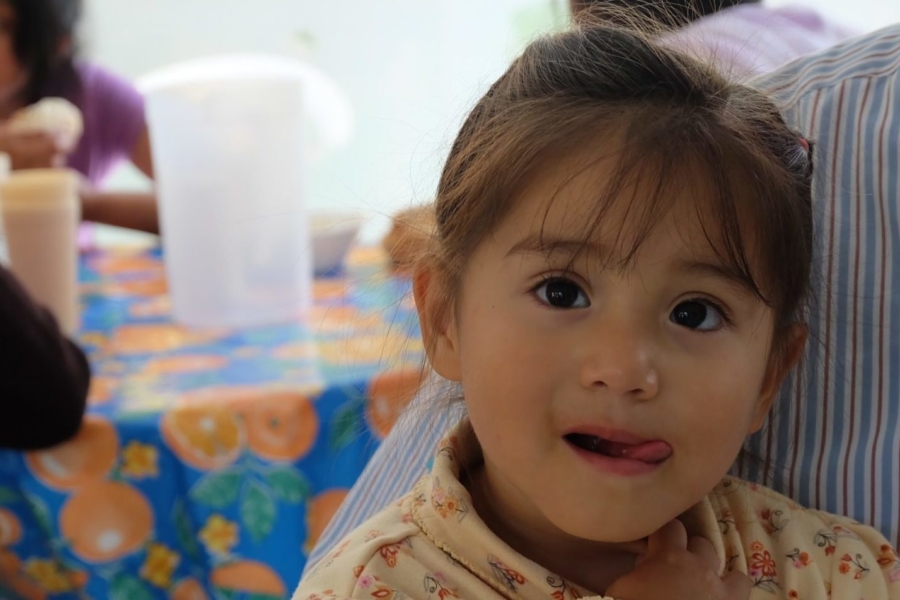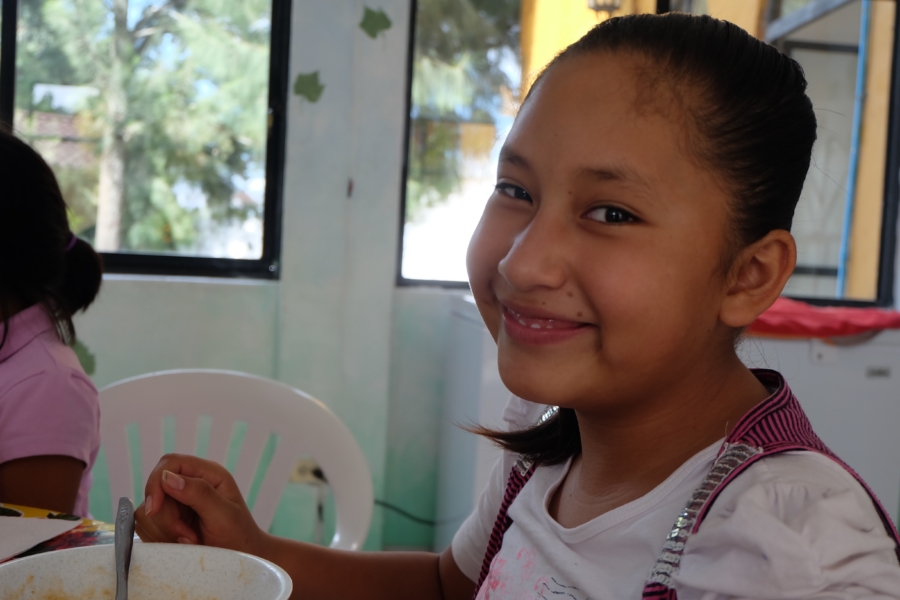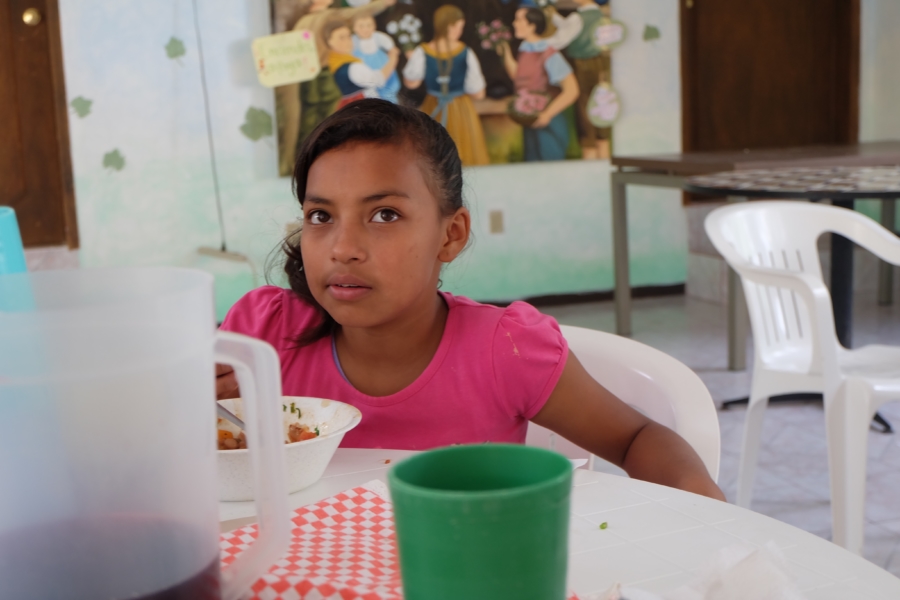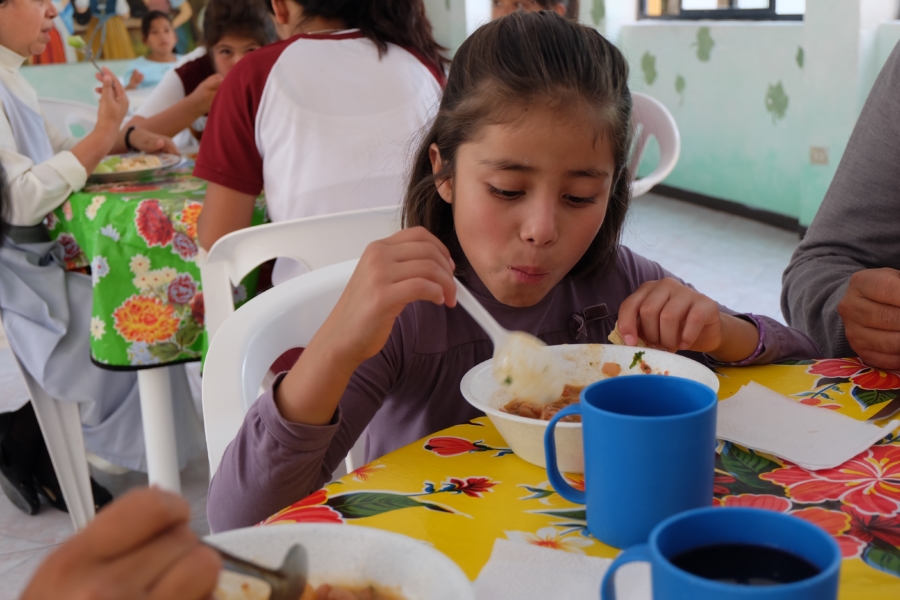After just a few days in Mexico, Luis and I have already seen the impact of not just Children Incorporated’s efforts in these communities, but the impact of local generosity and perseverance too.

Luis pictured with Sister Isabel
Santa Julia, a home for girls just outside downtown San Miguel de Allende, was both like and unlike Mexiquito. Narrow roads led to the home, which is closely surrounded by private residences separated from the home by steep, protective walls, giving it a sort of tightly packed fortress feel.
In reality, Santa Julia is larger than it initially appears. The tall dorms obscure the rest of the property from sight, but the property includes a computer lab, an art room, a recreation room, a sanctuary, a cafeteria, a playground, and gorgeous grounds with the lime trees that are starting to feel to me like a symbol of comfort and calm.
Meeting Sister Isabel
Luis is initially confused by the introduction of Sister Isabel, Santa Julia’s new director. She’s not the director we’re used to working with — her predecessor, Sister Lydia, had been transferred a month ago. That’s fairly standard practice among the sisters so that they can have experience doing different kinds of work. At first, Luis was nervous. Sister Lydia had been a huge advocate for Children Incorporated and had taken great care to learn the program and diligently reported information about the 30-plus children who are enrolled at Santa Julia.
After just a few days in Mexico, Luis and I have already seen the impact of not just Children Incorporated’s efforts in these communities, but the impact of local generosity and perseverance too.
Sister Isabel quickly made us realize that our timing couldn’t be better. She’s new, but she’s very enthusiastic about learning more about Children Incorporated, so we took the opportunity to familiarize her with the program. And Sister Isabel, for her part, told us about the 36 girls who live at Santa Julia.
But really it wasn’t until we met them at lunchtime that we really fell in love. The Santa Julia girls introduced themselves by giving us hugs — they were so well-behaved, energetic, and loving. And it extended to the sisters, too. Each girl seemed so affectionate with their caretakers, and we realized it was probably the only affection the girls ever experienced. Most of them were abandoned or orphaned, and some come from abusive or neglectful families. But now, all of them — from age two all the way to university-age — are surrounded by love and support.
The children were so excited to have their guests sit and eat with them at lunchtime, and we were surprised that they knew all about sponsorship. Some of them kept asking us why we didn’t bring the sponsors — they call them “padrinos,” which means “godparents” — with us! I loved the idea that they so warmly wanted to meet their sponsors.
Like Mexiquito, Santa Julia received some funding from the government, but only for individual children who the government placed in the home. Unlike Mexiquito, the surrounding community donates not just in-kind services but a significant financial gift as well, particularly the foreign community in San Miguel de Allende. Their funding is evident in the brand new dorms, the new playground, and the English classes taught by a dedicated teacher.
By the time we leave, we’re fully convinced that Sister Isabel is the right person to be at the helm of the good ship Santa Julia. Even though she’s new to the job, her big heart and enthusiasm are so evident, as is the experienced team she has working with her.
We wave goodbye to the girls of Santa Julia, promise to thank their padrinos, and get ready for a visit we’d been looking forward to since the day we started planning our trip.
21st Century Knowledge for 21st Century Children
About four years ago, a few Children Incorporated donors traveled with Luis to San Miguel de Allende to meet with Sandra Suaste, director of the local library. The idea had been floated that if Children Incorporated focused on coming up with a way to teach technology to the children in both San Miguel de Allende programs, that would give those boys and girls a significant leg up for the future.
We wave goodbye to the girls of Santa Julia, promise to thank their padrinos, and get ready for a visit we’d been looking forward to since the day we started planning our trip.
Often, local schools and even the homes themselves don’t have the resources to dive into teaching technological skills. The donors and Luis envisioned an environment where children could be instructed on how to use computers and even get the building blocks for how to build digital products. Adults, too, could use the facility to take classes that might generate a little income for the library. Like farming, which we’ve seen some of the more rural programs make a priority for learning, tech instruction has the potential to reach down through multiple generations and change lives.
The Director of the Biblioteca Publica de San Miguel de Allende was on board, and now, our mission was to check on the classes.
Sandra was all smiles — the classes were going well, and she even had some recommendations for updating the computers at the lab and donating the older ones for the community to use. Having just met the children from Santa Julia and Mexiquito, we were able to picture them at the lab. It felt great to know that they were receiving something that they’d have trouble getting access to otherwise.
I enjoyed finding another way that Children Incorporated has helped these kids. The Biblioteca Publica reminded me that Children Incorporated work goes beyond homes and schools, sometimes setting up entirely new programs with willing partners.
***
HOW DO I SPONSOR A CHILD IN MEXICO?
You can sponsor a child in Mexico in one of three ways – call our office and speak with one of our sponsorship specialists at 1-800-538-5381, email us at sponsorship@children-inc.org, or go online to our donation portal, create an account, and search for a child in Mexico that is available for sponsorship.





